Share the post "Must-Watch Texas Westerns: Ultimate Guide to the Scene, Stars, and Classics"
Texas Westerns are a ride across sun-drenched vistas with brave outlaws and steadfast heroes. These films depict Texas’ rough beauty and rich history, not merely entertain. Each of the must-see Texas Westerns offers a distinct story and honors a period that shaped American cinema.
Texas Westerns have grown from dusty trails to crowded saloons with fascinating characters and intriguing stories. With films like “The Searchers,” John Ford has immortalized the genre, while John Wayne has embodied the cowboy spirit. This genre shows American mythology’s moral conflict set amid huge grasslands and harsh cow communities.
Key Takeaways
- Texas Westerns captivate you with American West legends.
- Through compelling stories and characters, they demonstrate filmmaking’s progression.
- These beloved flicks use iconic Texas landscapes.
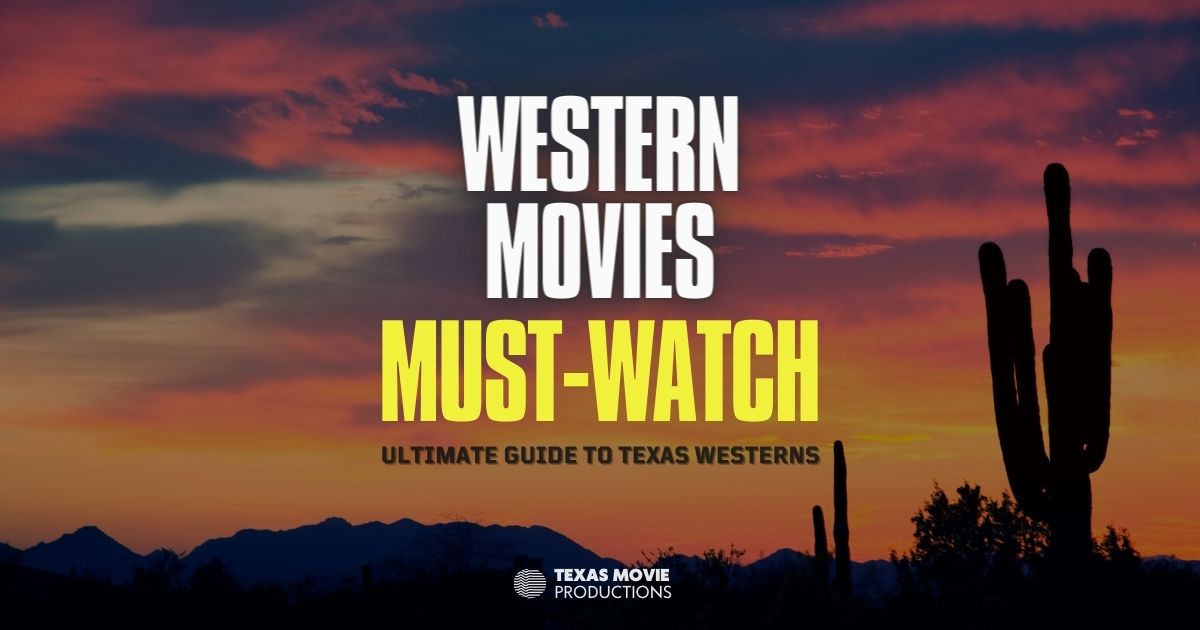
- Origins of the Western Genre
- Evolution of Texas Westerns
- Iconic Texas Western Films
- Key Directors and Actors
- Filming Locations Used in Texas Westerns
- Cultural Impact of Texas Westerns
- Top Texas Westerns by Decade
- Cinematography in Texas Westerns
- Music and Soundtracks
- Costuming and Props
- Awards and Recognitions
Origins of the Western Genre
You’re stepping into a narrative rooted in America’s rugged past! The Western genre, your portal to the lawless expanse of the frontier, began as a unique form of storytelling set largely between the California Gold Rush in 1849 and the frontier’s closure in 1890.
In its infancy, Westerns were literary works—novels and short stories painting vivid scenes of the American West in the late 19th century. Imagine yourself surrounded by dusty trails, saloon brawls, and the tension between outlaws and lawmen. These stories captivated audiences with their depiction of a wild, untamed land.
As technology advanced, Westerns galloped from page to screen, transforming into motion pictures and television shows. The genre’s leap to visual media began in earnest with a 1912 Motion Picture World magazine, which discussed Western films as a new narrative category.
Here’s what cemented the Westerns in popular culture:
- Iconic Characters: Cowboys, gunslingers, and sheriffs became the legendary faces of Westerns.
- Themes: Justice and revenge were often at the heart of these tales, where personal and societal conflicts played out against sprawling landscapes.
- Setting: The dramatic backdrops ranged from the Southwestern United States to parts of Northern Mexico and Western Canada.
Westerns rapidly gained popularity, evolving into a staple of early Hollywood and leaving a lasting impact on cinema. Your view of the American frontier is forever shaped by these gripping, dust-kicking stories!
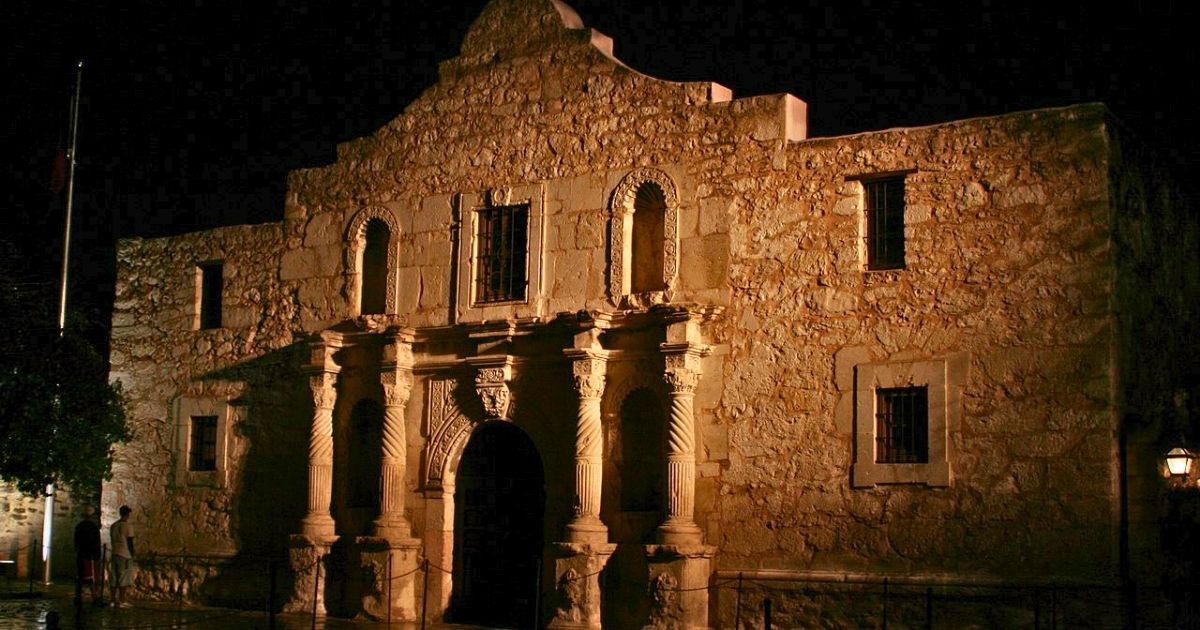
Evolution of Texas Westerns
Your love for the Wild West is about to get an exciting dose of Texas history, as we journey through the cinematic evolution of Texas Westerns, from early classics to modern reinterpretations.
Early Texas Westerns
Imagine yourself back in the 1940s: Texas has become a paramount setting for Western films. These films often represent the vibrant tales of cowboys, outlaws, and lawmen that defined the Old West. A notable movie from this era is The Yellow Rose of Texas (1944). It featured an insurance agent working undercover as a singer on a showboat, crossing paths with a bank robber—a blend of drama, music, and Western themes, true to the period.
Modern Texas Westerns
Fast forward to contemporary times, you’ll see Texas Westerns reflecting a modern sensibility. These films might retain the time-honored Western tropes but explore them with a fresh perspective. For instance, No Country for Old Men offers a gritty, Oscar-winning view of the Texas landscape. It juxtaposes traditional Western elements against modern struggles, suggesting that the spirit of the West is timeless, even as the world changes around it. Texas continues to be a versatile backdrop for tales of morality, survival, and adventure.
Iconic Texas Western Films
Experience the essence of the Lone Star State through these legendary Texas-centric Western films. Each movie captures the spirit of Texas history, tradition, and the vast beauty of its landscapes.
The Alamo
This grand tale of heroism portrays the 1836 Battle of the Alamo during the Texas Revolution. The Alamo allows you to witness the valor of Texans defending their territory against overwhelming odds, a pivotal moment in Texas history.
Giant
Giant is an epic chronicle of a Texas cattle rancher and his family. Spanning over two generations, this film delves into themes of wealth, race, and social change, painting a mesmerizing portrait of Texan life that’s as vast as the state itself.
Rio Bravo
Set in a small Texas town, Rio Bravo offers a gripping story of a sheriff who must keep a murderer in jail with the help of a ragtag group. It’s an intense showdown that exemplifies the rugged justice in the heart of Texas.
Lonesome Dove
This miniseries adaptation of Larry McMurtry’s novel, Lonesome Dove, follows former Texas Rangers on a cattle drive. It’s a journey that is as much about the bond between friends as it is about the dangers and adventures they face across the frontier.
No Country for Old Men
In No Country for Old Men, the Texas desert backdrop becomes a character itself in this tense, cat-and-mouse thriller. A discovery of two million dollars sets off a chain of events that pits you against the harsh West Texas terrain and the darker sides of humanity.
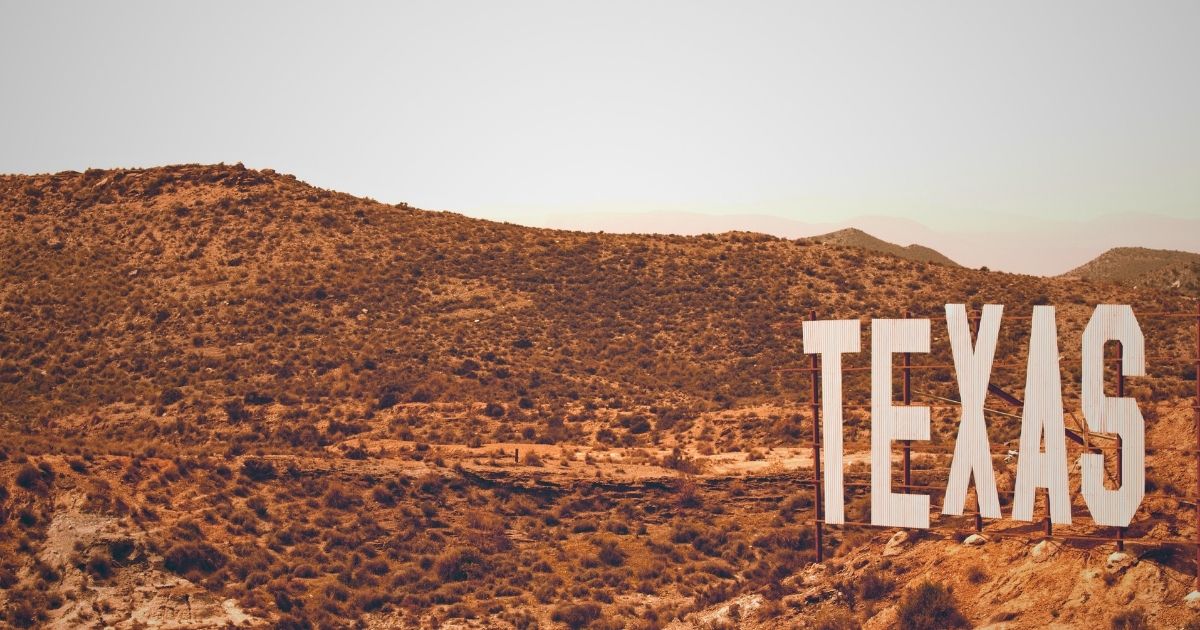
Key Directors and Actors
In the rugged terrains of Texas Westerns, you’ll encounter legendary filmmakers and iconic stars. These trendsetters etched their names into cinematic history through tales spun across dusty trails and lonely prairies.
John Ford
John Ford, a titan of the Western genre, directed classics that defined the early American West. His collaboration with John Wayne produced the unforgettable The Searchers (1956), cementing Ford’s status as a master storyteller.
Howard Hawks
With Howard Hawks at the helm, you witness a seamless blend of action and drama. Movies like Red River (1948) showcase his ability to navigate the complexity of frontier life, marked by memorable performances.
John Wayne
As the quintessential cowboy, John Wayne‘s towering presence dominates the landscape of Western cinema. His roles in films like Stagecoach (1939) and True Grit (1969) immortalize him as the enduring symbol of the Wild West.
James Dean
Although James Dean starred in only three films before his untimely death, his performance in Giant (1956), set in Texas, resonates with the intensity and depth that make his characters unforgettable.
Tommy Lee Jones
Your journey through Texas Westerns would be incomplete without the rugged authenticity that Tommy Lee Jones brings to the screen. Watch him lead in Lonesome Dove (1989), a TV miniseries, and witness his portrayal of a Texas Ranger in epic cattle drives resonate with genuine grit.
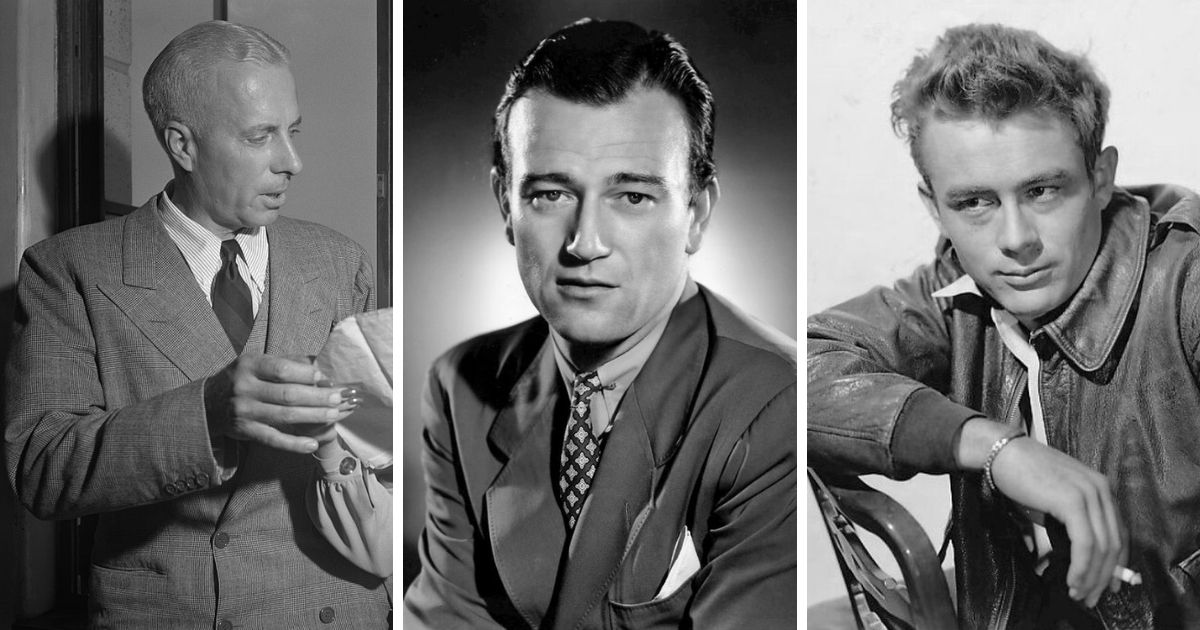
Filming Locations Used in Texas Westerns
Texas has served as a grand canvas for the Western genre, inviting you to follow in the footsteps of cowboys and outlaws through the rugged beauty of its landscapes. Let’s saddle up and ride through some iconic Texas filming locations that have been immortalized in Western cinema.
Alamo Village
Built for the 1960 film The Alamo, Alamo Village in Brackettville was the first movie location built on Texas soil expressly for a Western film. This spot has been a favorite for filmmakers due to its authentic replication of the famed Alamo and the surrounding 1830s San Antonio.
Big Bend National Park
Big Bend National Park‘s desolate beauty makes it a go-to backdrop for Westerns—its vastness and untouched landscapes bring an unmistakable authenticity. Films like There Will Be Blood have utilized the park to capture the essence of period settings that resonate with the untamed spirit of the West.
Monument Valley
Though not in Texas, Monument Valley on the Arizona-Utah border has been a high-caliber stand-in for Texas in Westerns like Stagecoach. The towering sandstone buttes epitomize the wild American frontier and have become synonymous with the genre.
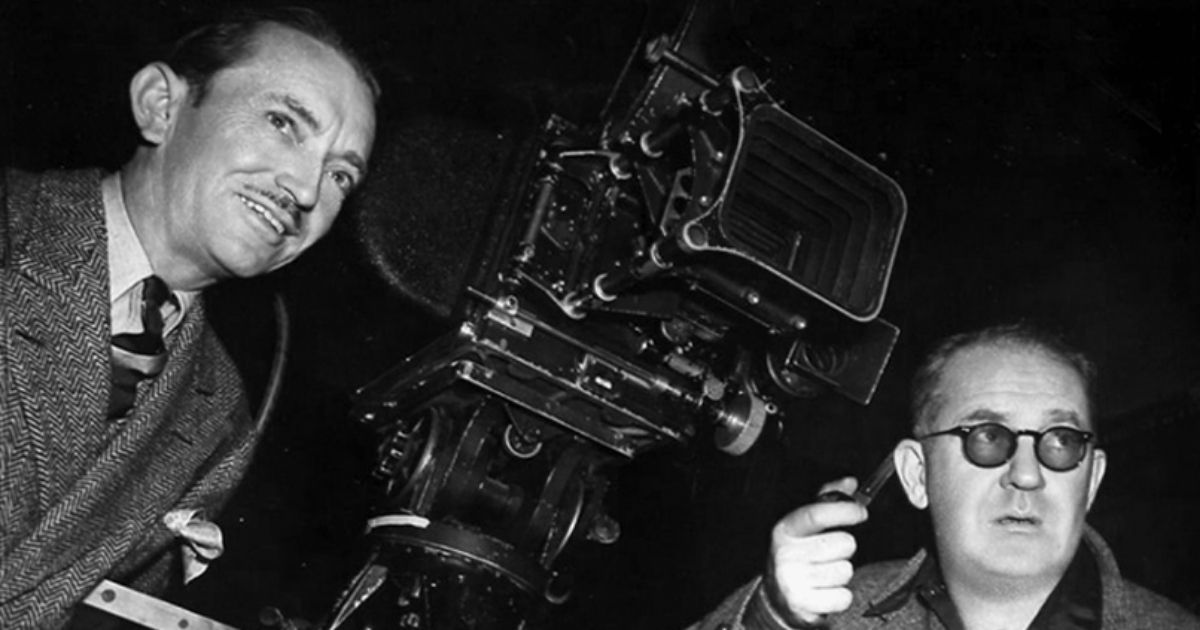
Cultural Impact of Texas Westerns
Texas Westerns hold a special place in the heart of American cinema. As you explore these films, you’ll find that they’re more than just tales of cowboys and outlaws. They have profoundly shaped the cultural landscape.
- True Grit (2010), the Oscar-winning remake, spotlights Blanco, Texas. It immerses you in a rugged Texan backdrop, capturing the essence of the frontier spirit. The film’s impact is tangible, transforming how you see the perseverance of Western characters.
Texas Westerns often convey a narrative of regeneration through violence. This theme reflects the historical lawlessness of the frontier and the conflicts that accompanied westward expansion.
- The genre has been critiqued for glorifying oppression, as Westerns can oversimplify complex historical events. However, this critique fuels discussions that can lead to a more nuanced understanding of Texas history.
- Iconic Texas figures such as Sam Houston and Andrew Jackson have seen celluloid revival. Their portrayal in Westerns brings to life the leaders that shaped Texas and weaves their legacies into your modern cultural fabric.
Westerns hold up a mirror to the values that Texans and Americans see in themselves: resilience, justice, and freedom. By engaging with Texas Westerns, you’re not just entertained; you participate in a legacy that resonates with the timeless allure of the Wild West.
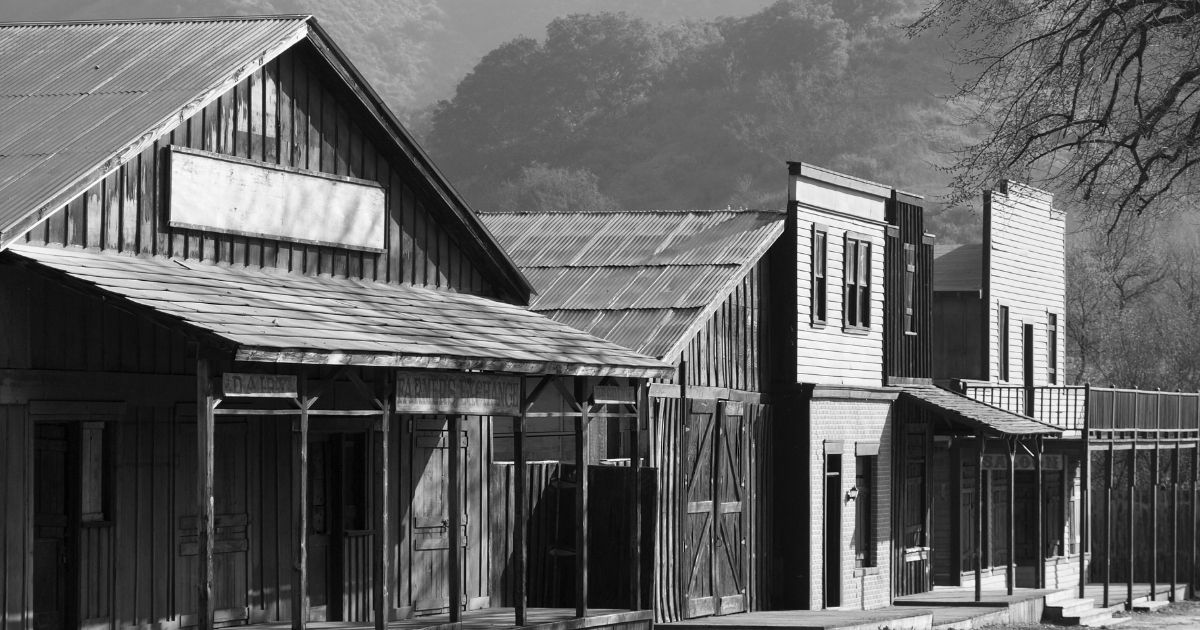
Top Texas Westerns by Decade
Explore the rugged landscapes and dramatic tales of the Lone Star State as we take you through the must-watch Texas Westerns that defined each decade from the 1950s onward.
1950s
- “The Searchers” (1956): Experience the harsh Texas terrain in this epic quest of a Civil War veteran searching for his abducted niece. Its masterful storytelling and scenic backdrops will captivate you.
1960s
- “The Alamo” (1960): Immerse yourself in the heroic stand at the Alamo with this powerful historical drama. Its gripping narrative will transport you right into the heart of Texas’s fight for independence.
1970s
- “The Getaway” (1972): Fasten your seatbelts for this action-packed heist film set in the dusty towns of Texas. Steve McQueen’s performance will keep you on the edge of your seat.
1980s
- “Red River” (1988): (TV Movie) Follow the challenging cattle drive of a rancher named Tom Dunson in this gripping remake of the 1948 classic. The stunning landscapes and intense plot twists are unmissable.
1990s
- “Lonesome Dove” (1989): Although a bit earlier, this miniseries deserves mention for its vivid portrayal of retired Texas Rangers. It’s a riveting adventure sprawling across the Texas prairies that continued into the ’90s.
2000s
- “The Three Burials of Melquiades Estrada” (2005): Join Tommy Lee Jones on an unconventional journey of justice and friendship. The movie’s authenticity and raw emotion will resonate with you long after the credits roll.
2010s
- “Hell or High Water” (2016): Dive into this modern Western’s tale of two brothers turned bank robbers. The intense storyline and the moral complexities it navigates are set against a backdrop you’ll recognize as quintessentially Texan.
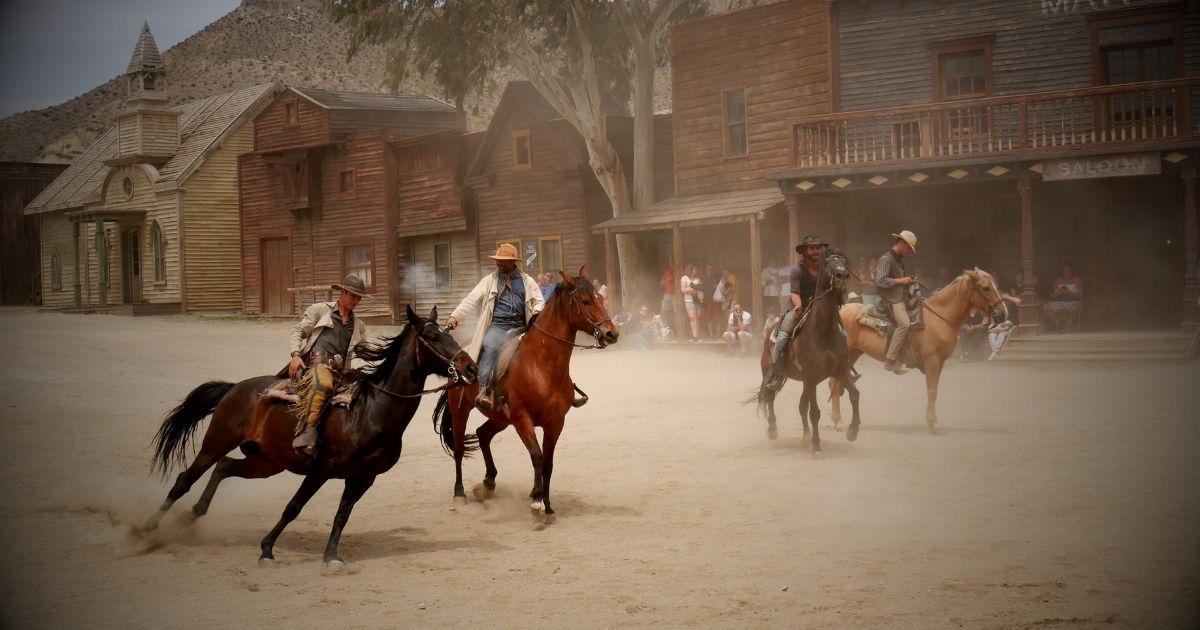
Cinematography in Texas Westerns
When you watch Texas Westerns, you’re treated to a visual feast that captures the vast, rugged landscape of the Lone Star State. These films utilize the expansive terrain to tell stories of courage, conflict, and the American frontier experience.
- Stagecoach (1939)
- Despite being filmed in black-and-white, this film’s framing and use of contrast deliver a powerful portrayal of the era, emphasizing the isolation and vastness of the Texan landscape.
In films like The Yellow Rose of Texas (1944), the cinematography is not just about the scenery, but also the cultural context of the time. This integrates the musical elements with the drama of the Western genre, allowing you to feel the blend of entertainment from the period.
- Big Jake
- The cinematography reflects the gritty reality of the Texas setting. Watch for the use of natural lighting and wide shots that place the characters against a backdrop of Texas’s daunting and untamed nature. The character of Big Jake accentuates the grandeur of the landscape through his larger-than-life presence.
As you immerse yourself in these films, notice how cinematography is not just a background; it’s an active participant in the storytelling. Each frame is a brushstroke that paints the broader picture of Texas’s mythos in the cinematic world. Keep your eyes open for scenes that use the horizon and the interplay between light and shadow to underline the intensity of the Western drama.
In essence, the camera lens in Texas Westerns serves as your gateway to stepping back into a world where the grit of the frontier comes alive through each shot, making you part of the legend that is Texas.
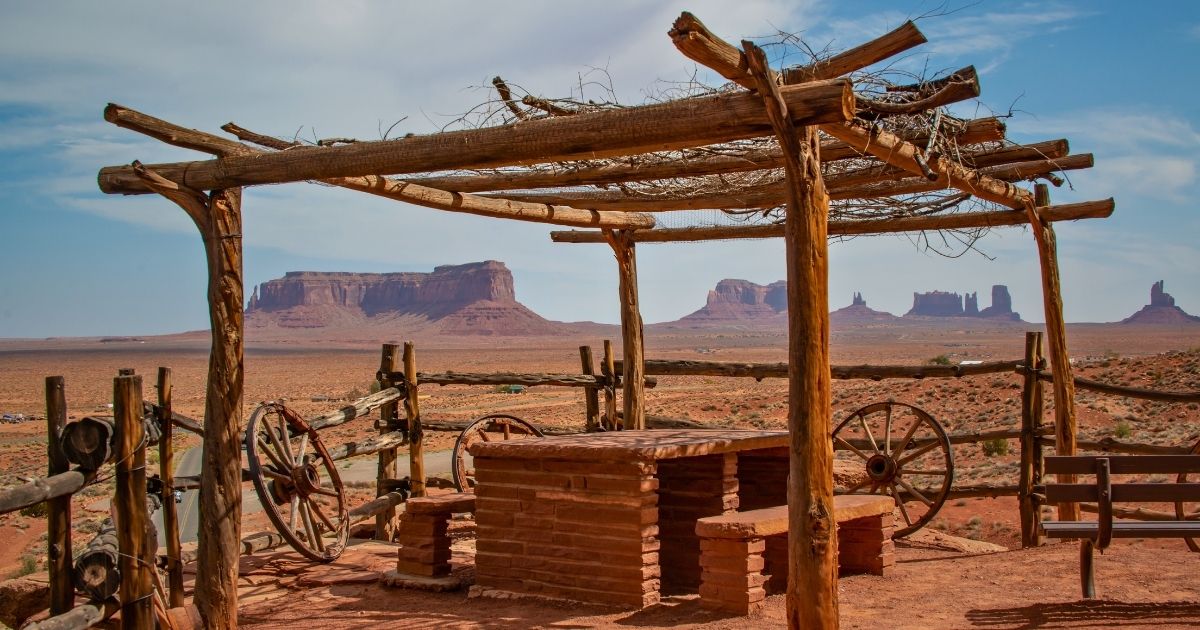
Music and Soundtracks
Your journey through Texas Westerns is not merely a visual ride; the music and soundtracks are keys that unlock the soul of the Wild West. Let’s saddle up and explore some iconic scores!
Red River (1948) Prepare to be swept up by Dimitri Tiomkin’s grand orchestral symphony. This soundtrack set the bar for Western scores, and its influence on the genre’s music is undeniable.
The Searchers (1956) Your adventure continues with Max Steiner’s magnificent compositions, which intensify the drama and action in this panoramic Western. It’s a piece of sonic artistry that’s as vast as the Texas landscapes it portrays.
The Good, The Bad, and The Ugly (1966) Ennio Morricone’s compositions for this film are nothing short of legendary. The iconic whistle and eclectic instrumentation make the themes from this movie instantaneously recognizable and eerily resonant.
Here’s a quick snapshot of some great soundtracks:
- Red River – A symphonic journey across the Chisholm Trail.
- The Searchers – Orchestral depth that mirrors the high stakes of the narrative.
- The Good, The Bad, and The Ugly – A blend of whistles, ocarina, and electric guitar defining Western film music.
Remember, the music in Texas Westerns isn’t just background; it’s a vibrant character all its own, telling tales of courage, suspense, and the relentless pursuit of justice. Each note and chord carries the dust and determination of the Old West straight to your ears. So, sit back and let the soundtracks immerse you in the true spirit of Texas Westerns.
Costuming and Props
When you’re diving into Texas Westerns, the authenticity of costuming and props significantly enhances the viewing experience. Take “Lonesome Dove”, where the detailed costuming captures your imagination, transporting you to the era of cattle drives. You can practically feel the dust on your skin with every scene. The characters, adorned in worn hats, spurs, and chaps, mirror the rugged life of former Texas Rangers.
- Chaps and Spurs: Indicative of the rough terrain and horseback riding.
- Cowboy Hats: Each character’s hat tells a story, from the wide-brimmed to the sweat-stained.
In films like “The Yellow Rose of Texas”, dated 1944, although not as high in fidelity as modern films, the props such as stagecoaches and period-appropriate firearms add a layer of immersion.
- Stagecoaches: A symbol of the Old West, critical for transportation scenes.
- Firearms: From the iconic revolvers to rifles, each is chosen for period accuracy.
Contemporary Texas Westerns, such as those highlighted in Cowboys and Indians Magazine, blend traditional styles with improved design techniques to offer high-quality representations. You’ll notice this in “Brimstone” and “Forsaken”, where the attention to detail in costuming is meticulous.
- Materials: Premium fabrics and leathers that reflect the times.
- Accessories: Holsters, buckles, and bandanas finely curated.
These elements are not just visual; they tell a silent tale of the struggles, lifestyle, and identity of characters you’ll follow through the rugged landscapes of Texas. Keep an eye out—you’ll find each costume and prop enriches the narrative in its own unique way.
Awards and Recognitions
When you explore the terrain of Texas Westerns, you’re treading on hallowed cinematic ground. Many of these films are not just regional treasures; they’ve garnered national and international acclaim.
- No Country for Old Men: This intense drama set in Texas not only held you on the edge of your seat, but also swept the Academy Awards with four Oscars, including Best Picture. Its critical acclaim is a testament to the film’s powerful storytelling and exceptional craftsmanship.
- Lonesome Dove: Although originally a TV miniseries, your experience with this epic Western journey would be incomplete without acknowledging its numerous awards. It scooped up seven Emmy Awards and two Golden Globes, vastly contributing to the legacy and prestige of Texas-set Westerns.
- The Last Picture Show: This film is an evocative portrayal of small-town Texas life, and your deep dive into its background reveals an impressive trophy case. It secured two Academy Awards and several nominations, cementing its place as a classic in the Western genre and beyond.
Witnessing such accolades, you’ll find that Texas Westerns are far more than just regional cinema. Their storied achievements have left an enduring mark on the film industry, serving as your beacon to the exemplars of the genre.
Share the post "Must-Watch Texas Westerns: Ultimate Guide to the Scene, Stars, and Classics"
Christian Linden is a seasoned writer and contributor at Texas View, specializing in topics that resonate with the Texan community. With over a decade of experience in journalism, Christian brings a wealth of knowledge in local politics, culture, and lifestyle. He holds a Bachelor's degree in Communications from the University of Texas. When he's not writing, Christian enjoys spending weekends traveling across Texas with his family, exploring everything from bustling cities to serene landscapes.











